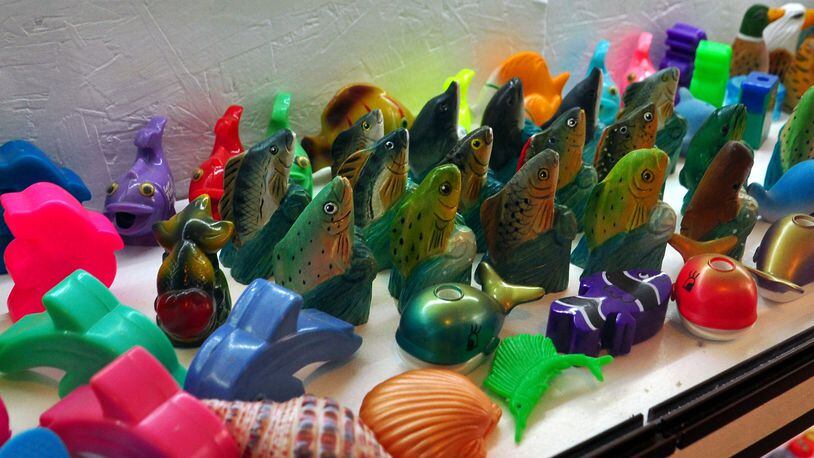When doors clang shut in this museum, visitors might feel a tingle down their spines, imagining what it would be like to be imprisoned in a 10-by-6-foot cell.
Cell Block 7 lies on active prison grounds in Jackson, Mich., but the only inmates visitors see are an occasional glimpse through the fence to the prison yard. Instead, they learn about life behind bars in what once was the world’s largest walled prison, housing more than 5,000 inmates. It opened in 1934, and Cell Block 7, with five tiers of cells, was an active part of the penitentiary until 2007. Assisted-suicide doctor Jack Kevorkian spent his first day in prison here, and Detroit Tigers baseball player Ron LeFlore was discovered while playing in the prison’s baseball league.
On self-guided tours, visitors see how Michigan’s most hardened criminals attempted to escape by tunneling under walls. One even lifted off in a helicopter. They learn about prison riots, including one in 1952 that lasted five days with 2,600 inmates holding nine guards hostage. It inspired the film “Riot in Cell Block 11.” Other movies filmed here include “Stone” with Robert De Niro and “Conviction” with Hilary Swank. Another, “Old Man and the Gun,” is set for release this year with Robert Redford in the title role.
INTERNATIONAL SPY MUSEUM
James Bond wannabes get a taste of spycraft in Washington, D.C., at the only public museum in the nation dedicated to espionage.
The “School for Spies” exhibit contains more than 200 artifacts, including a CIA disguise kit and a buttonhole camera on a coat worn by KGB operatives. Historical displays detail the undercover work of purported (and executed) spy Mata Hari, cookbook author Julia Child and film director John Ford. A special exhibit chronicles 50 years of James Bond villains. In two immersive experiences, participants can try to locate a missing nuclear device and go on a GPS-based outdoor walking mission. The museum store stocks disguise kits, spy toys and books.
In the fall, the museum is scheduled to move from its current location in the Penn Quarter to a building at L’Enfant Plaza, where it will more than double its floor space.
NATIONAL COOKIE CUTTER HISTORICAL MUSEUM
In many kitchens, the humble cookie cutter is relegated to the back of a cabinet until Christmastime, but in Joplin, Mo., it takes center stage all year in a section of the Joplin Museum Complex.
These cute kitchen utensils fill 11 display cases tracing their history. Europeans used hand-carved wooden molds to press dough into a variety of shapes, and when they emigrated to the U.S. they brought their molds with them. Tinsmiths created the first American-made cookie cutters in the 1700s. These were followed by cutters made of aluminum and then, when metal was scarce during World War II, plastic. Companies gave away free cutters as an incentive to buy their baking products.
WORLD OF COCA-COLA
Most people know how Coca-Cola tastes, but at this attraction in downtown Atlanta, they can sample more than 100 of the company’s most popular beverages around the globe, including Inca Kola, a sweet, fruity yellow drink created in Peru in 1935; Bibo Candy Pine-Nut, an African beverage with pineapple and coconut flavors; and Thums Up, the strong, top-selling drink of India.
The Coca-Cola experience includes a visit to The Vault, where the secret formula is kept, along with displays on its origins, myths and legends. Galleries in The Milestones section house exhibits on the history of Coke, featuring a 19th century soda fountain similar to the one where the drink was first served and a 1939 Chevrolet truck used to deliver the product in Argentina. Other attractions include a 4-D (multi-sensory) movie, Coca-Cola TV ads from around the world, a peek at the bottling process, and a chance to have a photo taken with the Coca-Cola polar bear.
PAUL A. JOHNSON PENCIL SHARPENER MUSEUM
What started off as a hobby for a retired minister has become a curiosity at the Hocking Hills Regional Welcome Center near Logan, Ohio.
The Rev. Paul A. Johnson began collecting pencil sharpeners more than 25 years ago, after his wife gave him two shaped like metal toy cars as Christmas gifts. The collection grew to 3,450 sharpeners in a variety of shapes and themes. Some celebrate the holidays, while others replicate animals — horses, cats, dogs. Some are shaped like food, some like symbols of the zodiac. There are sharpeners representing popular travel destinations, such as Disneyland and Spain, and some devoted to history and religion.
MARZIPAN MUSEUM
Lubeck, Germany, enjoys a reputation for producing some of the world’s finest marzipan. Nowhere is it more celebrated than at Niederegger, a confectioner that has been turning out the almond and sugar sweet since 1806.
Upstairs from the store and cafe stand a dozen life-size marzipan mannequins styled as figures from Lubeck’s history, along with a marzipan model ship and Faberge-like eggs. Exhibits and a video explain the history of marzipan and how it’s made. Originally from the Middle East, it was carried home by Crusaders in boxes called mataban. Today shoppers can choose from the store’s 300 varieties of marzipan.
———
(Katherine Rodeghier is a freelance writer.)
About the Author
